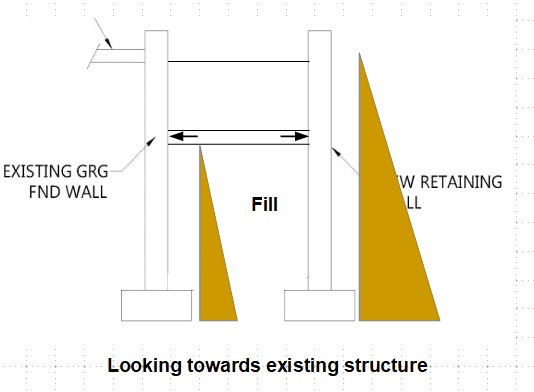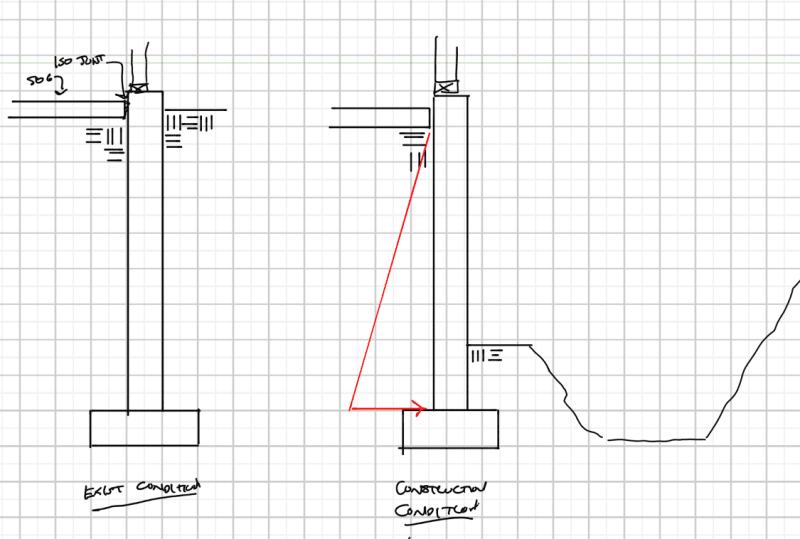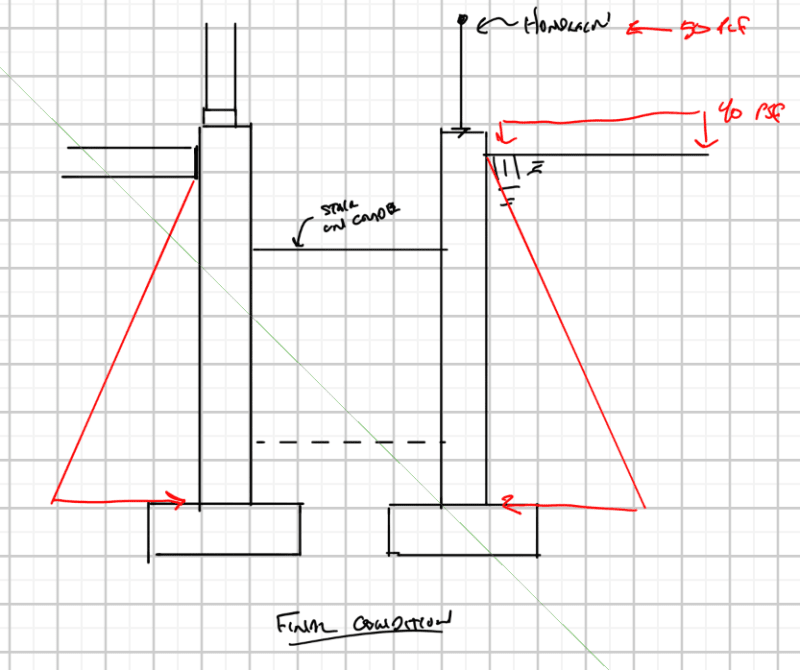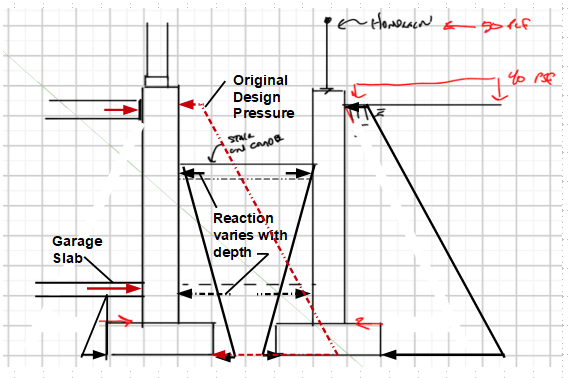Apache1
Structural
- Dec 14, 2021
- 31
Hi all. I got a call on a retaining wall that someone is installing to access their basement. As shown below there will be a set of stairs down to the basement. One side of the stairwell is a new retaining wall, the other side is an existing 7' tall foundation wall below the garage. Apparently the garage fnd wall had to be that tall to get down to good bearing soil. The reason I got a call is because the builder already had another engineer detail this retaining wall, but the builder thinks it's overdone. It was engineered as a true cantilever retaining wall, so it ended up with a 12" deep x 3'-6" wide footing, #4 bar at 12" on the retaining face, #4 bar at 12" longitudinal. In my opinion I think the other engineer did what technically "should" be done on a wall like this. However, I will admit that I have done stairwell walls like this before with a 20" wide footing and #4 bar at 16" in the center of the wall, with the reasoning being that the concrete stairs provide bracing against sliding and overturning for the retaining wall as they go up. With the stairs providing bracing, lateral soil pressures that will most likely never develop, tying the new wall into the existing concrete on the side of the doorway, and the short length of the wall, I figure that a retaining wall that will triple the owner's cost is unnecessary.
Curious what thoughts you all might have on this.

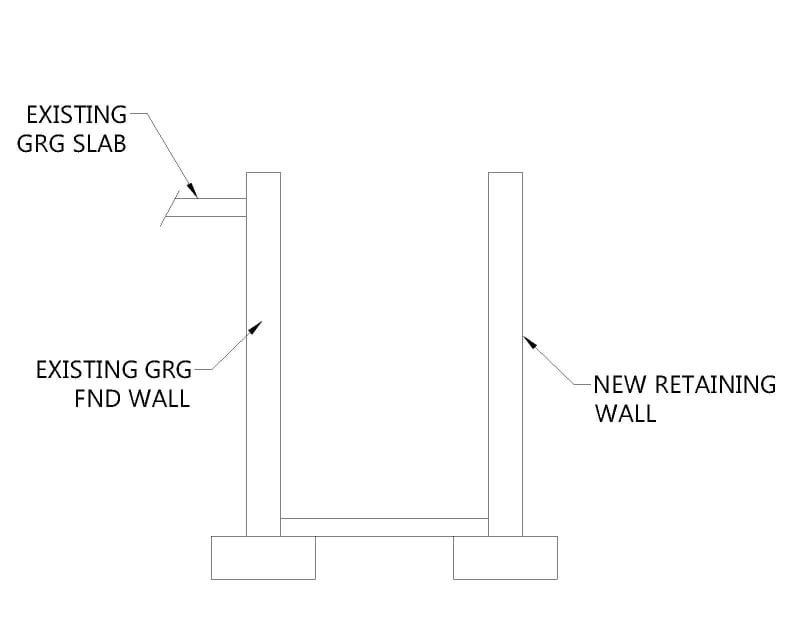
Curious what thoughts you all might have on this.



